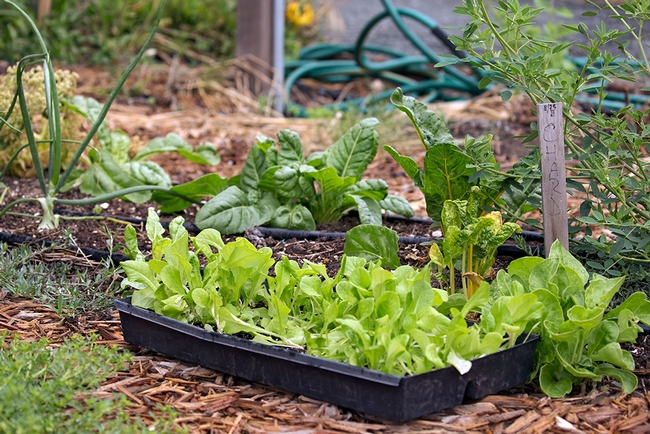by Linda Carloni
Tomatoes, peppers, green beans, zucchini – all well-known and glorious fruits of the summer garden. But while enjoying the bounty, it’s also time to give some thought to the fall and winter garden. Sometimes summer gardening takes all my garden energy and I take a break. But when I can summon myself to plant for the fall, I’m always happy I did. Things to consider:
What to Plant
The heat-loving favorites of summer aren’t good choices for the fall/winter garden. But so many other plants will work, and can be planted for the autumn garden, generally between now and the end of September. Some of these plants are best planted from starts, others should be planted from seeds:
- Lettuce, kale, chard and beets – these will work from either seeds or seedlings.
- Broccoli, cauliflower and cabbage, all from seedlings.
- For different kinds of leafy greens, Asian greens (from seeds or seedlings) or arugula (from seed).
- Carrots. From seed, and get them in by August.
- Garlic (from certified bulb cloves), but not until October 15. These grow through the winter and are ready to harvest in June or July.
Here’s even more detail and other plants to try, from the Alameda County Master Gardeners: http://acmg.ucanr.edu/files/37225.pdf. You can grow your own starts or buy them from local nurseries. Growing your own starts takes more advanced planning and can be challenging for beginners. Starting the plants yourself, though, is less expensive and you’ll have access to more varieties. If you want to try it, here are some tips for growing from seed.
Where to Plant
Many gardens have different patterns of light and shade in winter than they do in the summer. That spot next to the house that gets lots of sun and heat in the summer may be shaded by the house in the winter. If you are planting in the same place in the fall as you did in the summer, after the summer crop is done, be sure to refresh the soil with a few inches of compost. In Alameda, because our sandy soil loses nutrients so quickly, some vegetable fertilizer is a good idea before or at planting. Always follow the directions when using fertilizer – more is not better.
Pests
Some pests are less of a problem in the winter, but there are still issues to watch out for. Many fall/winter vegetables are “cole crops,” members of the cabbage family. These include Asian greens, broccoli, cabbage, cauliflower, and kale. These are susceptible to the dread cabbage looper caterpillars, which can devour your tender seedlings in a flash. The cooler the weather, the fewer of these moths and thus the fewer caterpillars. Floating row cover fabric placed as soon as you’ve planted the seeds or seedlings can help. The cover can come off when the temperatures get cooler and the plants are bigger. You can also use products with Bacillus thuringiensis (Bt), some of which are approved for organic use. Be sure to check the label to make sure the product works on caterpillars (there are various types of Bt products) and follow the directions. Another strategy is to plant some of your cole crops outside in September (to take advantage of more sun) and some in October (when the weather is cooling to avoid the worst of the caterpillars). Watch for snails and slugs – they love tender greens and will become more of a problem when the rains begin.
And remember to irrigate until the rains become steady. Here’s to home-grown salads all year round!

